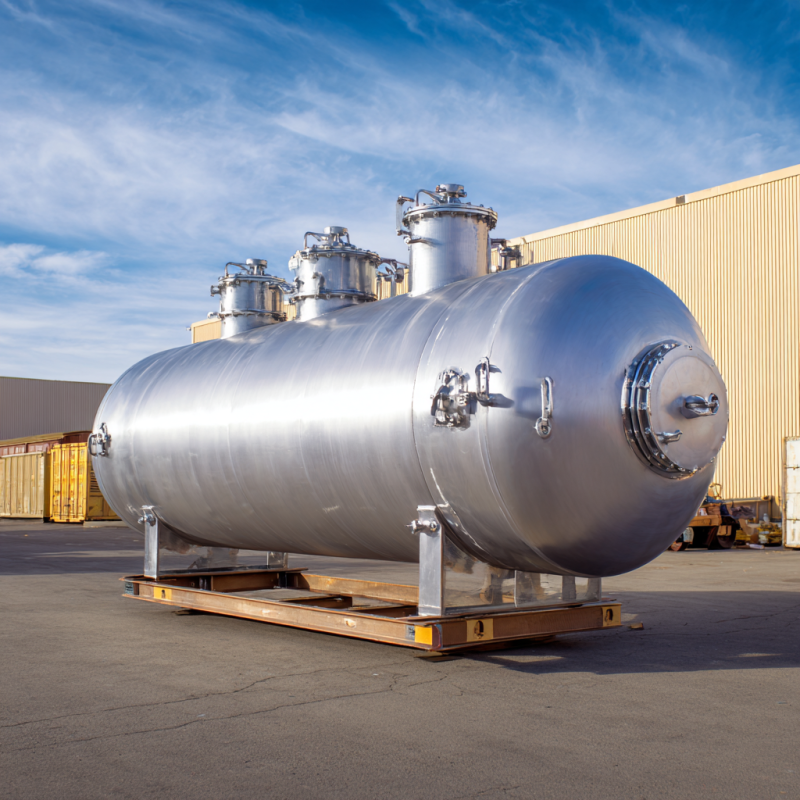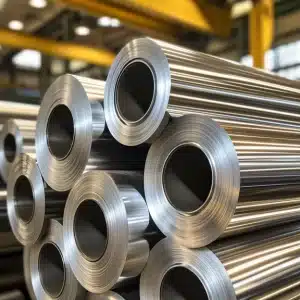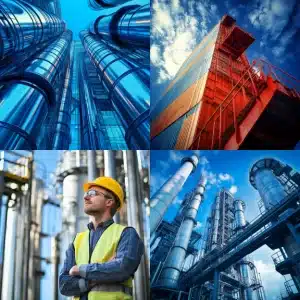
How Much Does an ASME Pressure Vessel Cost? Get the Facts
How much does an ASME pressure vessel cost?
If you have been wondering how much does an ASME pressure vessel cost, you are not alone. Many buyers want a simple price tag, but pricing can vary widely. Factors like vessel size, pressure rating, materials, and prefabrication all influence what you will finally pay. Here, we will break down the key considerations to help you budget and plan with confidence.
The complexity of ASME pressure vessel pricing stems from the highly customized nature of these critical industrial components. Unlike mass-produced equipment, each pressure vessel is typically engineered to meet specific operational requirements, environmental conditions, and regulatory standards. This bespoke approach means that two seemingly similar vessels can have vastly different price points based on subtle but important design differences. Understanding these nuances early in your planning process can help prevent budget surprises and ensure you allocate sufficient resources for your project.
Market conditions also play a significant role in pricing fluctuations. Steel prices, manufacturing capacity, and supply chain disruptions can all impact the final cost of your pressure vessel. Additionally, lead times can vary significantly based on manufacturer workload and material availability, which may influence your project timeline and associated costs. Working with experienced manufacturers who can provide realistic timelines and transparent pricing structures becomes crucial for successful project planning.
Understand key cost drivers
The cost of an ASME-certified pressure vessel depends on multiple elements working together, including:
- Size and complexity: Larger vessels or those that store high-pressure fluids often require thicker materials and additional safety measures.
- Material selection: Stainless steel, carbon steel, or specialty alloys affect raw material costs, which can be significant.
- Industry standards: ASME certifications help ensure safety and quality, but meeting these standards involves rigorous testing and inspection.
- Customization: If you need unique features or configurations, custom engineering adds to design and fabrication expenses.
- Shipping and handling: Moving large pressure vessels across long distances may involve specialized transport and logistics fees.
According to Red River, these considerations mean no “one-size-fits-all” quote. Instead, each project is evaluated on its unique demands to ensure you get a reliable vessel.
Beyond these primary drivers, several secondary factors significantly impact your investment. Geographic location affects transportation costs and installation labor rates, while remote sites may require specialized equipment and logistics planning. Project urgency can command premium rates for expedited manufacturing schedules.
Regulatory requirements specific to your industry add complexity and cost. Some applications need additional certifications beyond ASME compliance, such as API standards for oil and gas or FDA requirements for pharmaceutical vessels. These specialized certifications involve extra testing and documentation.
Manufacturer selection impacts both cost and value. While choosing the lowest bidder seems attractive, experienced manufacturers often provide better long-term value through superior engineering, quality craftsmanship, and reliable delivery. For detailed fabrication insights, check out how are pressure vessels fabricated.
Review materials and design
Material choice greatly affects your final bill. Stainless steel is often a top pick for corrosion resistance but can cost more up front. Carbon steel tends to be more affordable but may require extra coatings or maintenance. You will also find a wide range of design options, such as:
- Bare vessels with internals
- Modular setups with enclosures and climate control
- Coatings and insulation to handle extreme temperatures
- Electrical and instrument packages
Each additional feature or design tweak will reflect in the price. Working with trusted ASME certified pressure vessel manufacturers helps you strike the right balance between performance and cost, since they can recommend materials and layouts that meet your unique needs.
Material selection extends beyond the vessel shell to internal components, nozzles, and flanges. Vessels handling corrosive chemicals may require specialized alloys like Hastelloy for critical components, even if the main shell uses economical materials. These hybrid approaches optimize costs while ensuring reliable performance.
Design complexity significantly influences costs. Simple cylindrical vessels with standard configurations are most cost-effective, while complex geometries or multiple compartments substantially increase manufacturing expenses. However, advanced designs often provide operational benefits through improved efficiency and reduced maintenance requirements.
Modern technologies like smart sensors and monitoring systems add initial costs but provide valuable operational data for preventing failures and optimizing maintenance schedules.
Consider prefabrication benefits
Prefabrication means assembling entire modules or vessel components away from the final site. This approach offers clear advantages:
- Reduced onsite labor: Prefabrication cuts labor hours on-site, helping keep your budget in check.
- Faster installation: Prefab sections arrive ready to go, which slashes project timelines.
- Consistent quality: Manufacturing in a controlled shop environment improves consistency and reduces rework.
Red River specializes in prefabrication and notes that “any project can be prefabricated,” improving quality and lowering overall costs by eliminating wasteful onsite processes. If you want a deeper look, you can check out how are pressure vessels fabricated for more details on the step-by-step process.
The controlled shop environment provides optimal working conditions regardless of weather, better access to specialized equipment, and efficient workflow management. These factors reduce manufacturing time, minimize defects, and ensure consistent weld quality throughout fabrication.
Prefabrication enables better resource utilization and project scheduling flexibility. Manufacturers can optimize workflow by balancing multiple projects simultaneously across different fabrication stages, maintaining steady production rates that often result in customer cost savings.
Quality control processes are more easily implemented in shop environments with consistent lighting, climate control, and calibrated inspection equipment. This enhanced quality assurance reduces costly rework and field modifications that can significantly impact project budgets and schedules.
Making Smart ASME Pressure Vessel Investment Decisions
When it comes down to it, how much does an ASME pressure vessel cost? There is no single fixed price you might pay anywhere from tens of thousands to hundreds of thousands of dollars. It all comes down to the vessel’s size, materials, complexity, and whether you choose to leverage prefabrication. Quality manufacturers, like pressure vessel manufacturing experts who hold ASME certifications, can guide you through each step. The good news is that this process is more manageable than it first appears, especially when you work with a team that is upfront about design, materials, and total costs.
Making informed investment decisions requires understanding total cost of ownership, not just initial purchase price. This includes operational costs like energy consumption, maintenance requirements, and expected service life. A more expensive vessel with premium materials may provide better long-term value through reduced maintenance and extended operational life.
Timing your purchase impacts costs significantly. Planning ahead and avoiding rush orders allows manufacturers to schedule efficiently, potentially resulting in better pricing. Market volatility in raw materials, unexpected engineering challenges, or regulatory changes can affect project costs, so building budget flexibility is essential.
Selecting the right manufacturing partner involves evaluating communication style, project management processes, and cultural fit beyond just technical capabilities. Established relationships often result in preferential pricing, priority scheduling, and better understanding of your specific requirements.
Need a reliable partner?
Red River specializes in the design and manufacturing of pressure vessels. We also fabricate related items such as prefabricated spools and skid packages.
Reach out to us today and experience the Red River difference. Where American-made products and American Values come together, we care more.
Frequently Asked Questions
1. What are ASME pressure vessel manufacturers?
ASME pressure vessel manufacturers are certified companies that build pressure vessels following ASME safety codes. They must have special ASME certifications and employ qualified welders and inspectors. These manufacturers serve industries like oil & gas, chemical processing, and power generation.
2. What is an ASME pressure vessel?
An ASME pressure vessel is a container built to safely store or process pressurized fluids, designed according to ASME Boiler and Pressure Vessel Code to ensure durability, safety, and compliance with industry regulations.
3. How much does an ASME pressure vessel cost?
The cost of an ASME pressure vessel can range from $10,000 to over $100,000, depending on size, material, design complexity, and operating pressure. Custom-built vessels for specialized industries may cost significantly more.
4. Which industries need ASME pressure vessels most?
You will find them in sectors like oil and gas, chemical processing, power generation, and more. Any setting that stores or processes fluids under pressure typically needs an ASME-rated vessel.
5. Is custom design always more expensive?
Custom features can mean higher upfront engineering costs. However, if those design tweaks improve efficiency or safety, the long-term value often outweighs the initial price.
6. Can prefabrication improve quality and reduce cost?
Yes, prefabrication in a controlled environment can enhance quality checks and reduce labor costs. It also accelerates final installation at your site.
Key takeaways
- Costs vary widely for ASME pressure vessels, mainly due to size, materials, and certification requirements.
- Opting for prefabrication can help trim site labor hours and boost quality.
- Sturdy, corrosion-resistant materials may cost more initially but save money over the vessel’s lifespan.
- ASME certification guarantees that proven safety standards are met or exceeded.
- Collaboration with a skilled, reputable manufacturer helps you find the best balance between cost and performance.
Related Blog Post

Marine-Grade vs Standard Stainless Steel

Pros and Cons of Vertical Integration

How to Dry Desiccant Properly and Regain Its Effectiveness

Why Do Gas Turbines Need Fuel Water Separator Vessels, Red River

